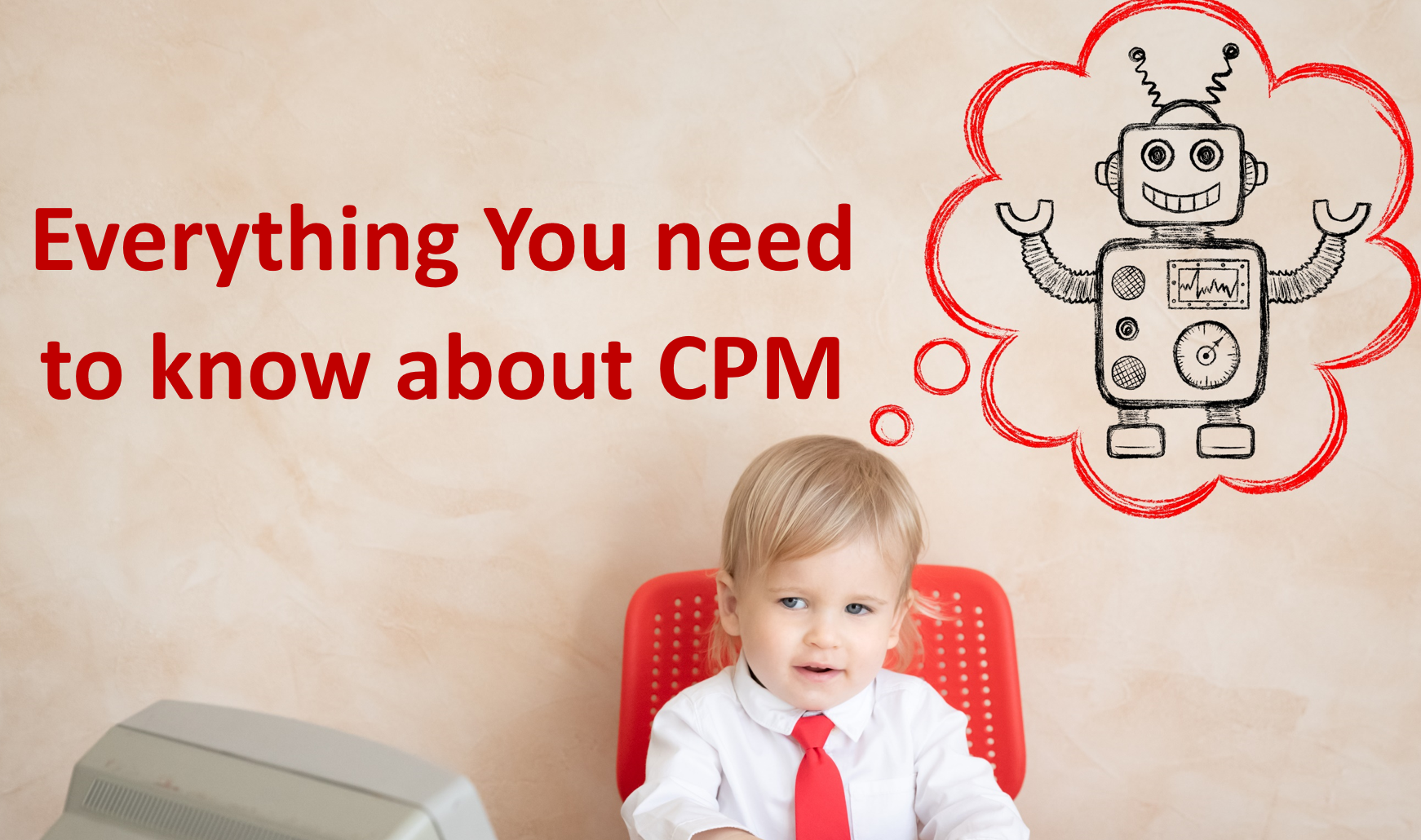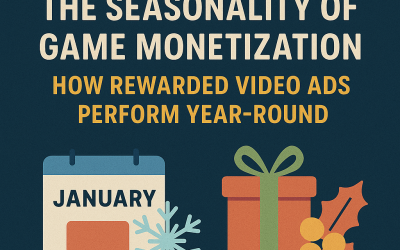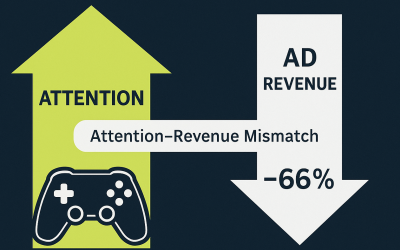Over the years, I frequently get asked about CPM / eCPM, what it is, how it gets calculated and more…. “Everything You need to know about CPM” post is my attempt to give a comphrensive reivew of CPM and how it affects Publishers , and what Ad format pays the highest CPM. While reading from top to bottom would make sense for some, if you want to jump to a specific topic, I have the table of content below.
1 – What is CPM / eCPM?
2 – How does CPM work?
3 – How to Calculate CPM?
4 – Different Ad Formats & CPM values
5 – CPM versus other types of metrics
6 – Other Factors Affecting CPMs
7 – Common asked questions about CPM
Contents
What is CPM / eCPM?
Cost per thousand (CPM) is a traditional and common pricing model used in digital marketing, representing the cost an advertiser will pay for every 1,000 impressions their ad receives on a web page. Derived from the Latin and old French word ‘mille’ meaning a thousand, CPM is primarily utilized in online advertising campaigns, including platforms like Google Ads, to reach audiences consisting of thousands of individuals.
In CPM marketing, an impression counts every time an ad is successfully displayed to the target audience, distinguishing it from a page view, where the whole web page loads on a user’s browser.
How does CPM work?
Advertisers utilize the Cost Per Mille (CPM) metric to gauge the necessary total expenditure to reach their desired audience and to assess the effectiveness of their advertising campaigns. This metric serves as a vital tool in understanding brand recognition, social targeting, and the prospective influence of CPM advertisements.
This pricing model is widely adopted across various advertising networks, such as the Google Display Network (GDN). It enables advertisers to place bids on advertising space according to CPM rates, allowing them to execute specific CPM strategies and allocate their overall advertising budget efficiently. Even when diverse metrics are aimed at optimization, platforms like Facebook predominantly operate on a CPM pricing structure.
Additional metrics that can be employed to evaluate the performance of a CPM campaign encompass eCPM (effective CPM), rCPM (revenue CPM), and vCPM (viewable CPM).
How to Calculate CPM?

While campaign analysts and strategists now have a wealth of data and metrics available to measure total impressions—digital views, user engagement, and ad effectiveness—the industry standard CPM still has many benefits for advertisers looking to track their ad impressions.
The calculation of CPM is straightforward: divide the advertising expenditure by the number of impressions and then multiply by 1,000. The formula represents as: CPM = (Ad spend / impressions) * 1,000
Different Ad Formats & CPM values
In the realm of online advertising, there are several distinct categories of ads: display, video, and high impact. Each of these categories encompasses various formats and styles that serve different purposes and command varying CPM rates.
Display Ads
Display advertising is a broad category that includes many types of visual advertisements, such as banners, interstitial, sticky, and others. This category excludes specific formats like video, audio, and high-impact formats, and generally falls on the lower end of the CPM spectrum.
Banner Ads: Often the first image that comes to mind when thinking of online ads, banner ads are rectangular displays typically found at the top of a webpage. Though some have coined the term “banner blindness” due to their widespread use (with the first banner ad for AT&T on Hotwired.com having a 44% CTR!), well-designed banner ads can still capture attention and drive clicks. Despite criticisms, banner ads remain a consistent revenue source for publishers and advertisers.
Interstitial Ads: These ads appear at natural breaks in content, often taking over the full page before receding once scrolled past. With high viewability and creative flexibility, interstitial ads consider valuable advertising real estate.
Rail Ads: Positioned on the sides of the main content, rail ads consider non-intrusive and “acceptable” even to ad-blocker users. Though they may have lower visibility, their non-intrusive nature can make them a valuable addition to an advertising strategy.
In-Feed Ads: Embedded within the feed content of a site, in-feed ads blend with recommendations for other content. Their native appearance and higher viewability and click-through rates make them attractive to advertisers.
In-Article Ads: These ads place between paragraphs, distinguishing them from interstitial ads by their smaller size and less intrusive nature. Their subtle placement affects their viewability and, consequently, their value.
Video Ads
Video advertising is more straightforward compared to display ads and typically commands the highest CPM of all ad formats. They can be served in various ways:
Outstream Video: These are standalone units that only play video ads.
Instream Video: Playing before the main video content, instream ads boast high completion rates and CPMs, making them highly valuable.
Rewarded Video Ads: A rewarded video ad is a video that a user can choose to watch in exchange for some incentive — an extra life in a game, an extended free trial, a puzzle hint, or virtual currency,
High Impact Ads
High impact ads are specialized formats that are unique to the ad partner developing them. These ads are diverse and can include interactive elements or other novel features. Generally, they command higher CPMs than standard display ads due to their distinctiveness and potential for greater engagement.
CPM versus other types of metrics
 CPM marketing isn’t the only type of pricing method for digital advertising. Other models can work well for you and help you grow your audience, depending on your particular needs. Some models can work alongside CPM marketing rather than as an alternative. It’s a good idea to familiarize yourself with the more common pricing models and paid search methods so you can make an informed decision on which to go with.
CPM marketing isn’t the only type of pricing method for digital advertising. Other models can work well for you and help you grow your audience, depending on your particular needs. Some models can work alongside CPM marketing rather than as an alternative. It’s a good idea to familiarize yourself with the more common pricing models and paid search methods so you can make an informed decision on which to go with.
Pay-per-click (PPC)
The PPC, or pay-per-click model, involves paying for each click-through of an ad. The pay-per-click pricing model also falls under the term CPC or cost-per-click. The two aren’t the same thing, as CPC is more of a subset or metric of an overall PPC model. So, stay cognizant of that when you see the terms used interchangeably.
In this case, you are effectively paying for a more powerful targeting algorithm. The advertising platform will want your ads clicked, so they may receive better placement. However, this can also translate to a higher cost for advertising, especially since most PPC platforms involve bidding on the ad space. So, marketers should make sure the potential gains from a click-through far outweigh the costs of the click.
The SERP page ads you see are typically of this nature, so understanding how search engines work can help with PPC advertising.
Cost per action (CPA)
CPA, or cost-per-action, is an advertising pricing model that allows marketers to pay for a specific action taken on an advertisement. This model works well for businesses with a very specific marketing objective.
The term cost-per-acquisition also falls into this category. However, this really refers to a specific action. For example, a marketer can pay for every conversion, which is a level beyond an impression or a click. Some examples of actions you can pay for in a CPA model can include:
The CPA model can do a lot for a business and its goals. However, it’s not always the best method to start with. In some cases, it’s a good idea to start with other pricing methods to gain a better idea of what datasets will work best when choosing the actions to pay for in a CPA marketing campaign.
Other Factors Affecting CPMs
Ad units aside, there are other factors that can affect your CPMs. Some of them, you can do something about, others are out of your control.
DEMOGRAPHICS
Depending on the demographic your site attracts, advertisers are willing to spend different amount. Not all demographics are created equal. If your content is geared to moms, you’re in luck. Moms are among the most valuable demographic with their spending power. Millennials are also a highly coveted due to their large population. Gen Z is quickly catching up to Millennials in clout, with their large population, and growing spending power.
CONTENT
Different verticals can command different CPM ranges. News sites are on the lower end and sports sites are on the higher end. This is due to the level of interest in the user. News readers are generally more transient, diverse and likely to skim, this can affect viewability and relevance. Sports readers are more niched and dedicated, spending more time and money on the sites they visit.
Evergreen sites with dedicated audiences generally earn higher CPMs than sites with transient audiences, like news.
VIEWABILITY
This is what it really all comes down to. Forget about the right placements and formats. For the advertiser all they really want to know is: did someone see the ad? Everything they do is toward that goal, to be seen.
Current viewability rates are pathetic, hovering around 55%. But there are things publishers can do to optimize their sites for viewability.
CTR – CLICK THROUGH RATES
The rate at which users click on an ad and actively converts them affects a publisher’s overall CPM. CTR is dependent on a few factors like the creative and the user profile. There isn’t much a publisher can do to influence this metric, although NMM has and continues to do testing around it. Often, we are successful in finding the best position to increase CTR.
Frequently Asked Questions about CPM

- What Is an Ad Impression?
An ad impression occurs whenever an ad is displayed to a website visitor or app user.
- What Is a Good CPM for Display Ads?
Determining whether a CPM is good or bad will depend heavily on individual business objectives. For example, higher CPMs could lead to unfilled impressions, while lower CPMs could be the result of poor-quality traffic.
- How Do You Choose the Right Online Advertising Pricing Model?
Choosing the right online advertising pricing model largely depends on goals, niche and audience. CPM is a low risk for publishers, while offering limited outcomes for advertisers at a low cost. The opposite is true for CPA, where publishers carry greater risk but can charge a premium for doing so.
- How Does Traffic Seasonality Influence CPM?
Traffic seasonality can affect how many people visit a site and how many impressions ads receive. A common example is a dating site. When Valentine’s Day nears then the number of users that visit the site increases, raising CPMs.
- How Do You Forecast Impressions?
Software such as Google Ad Manager (GAM) can forecast traffic and impressions to a site. When forecasting impressions, it is ideal to factor in traffic seasonality.
This post is also available on Medium – Follow us on Medium, AppLixir is a Rewarded Video Ads provider based in Seattle serving Web Apps



